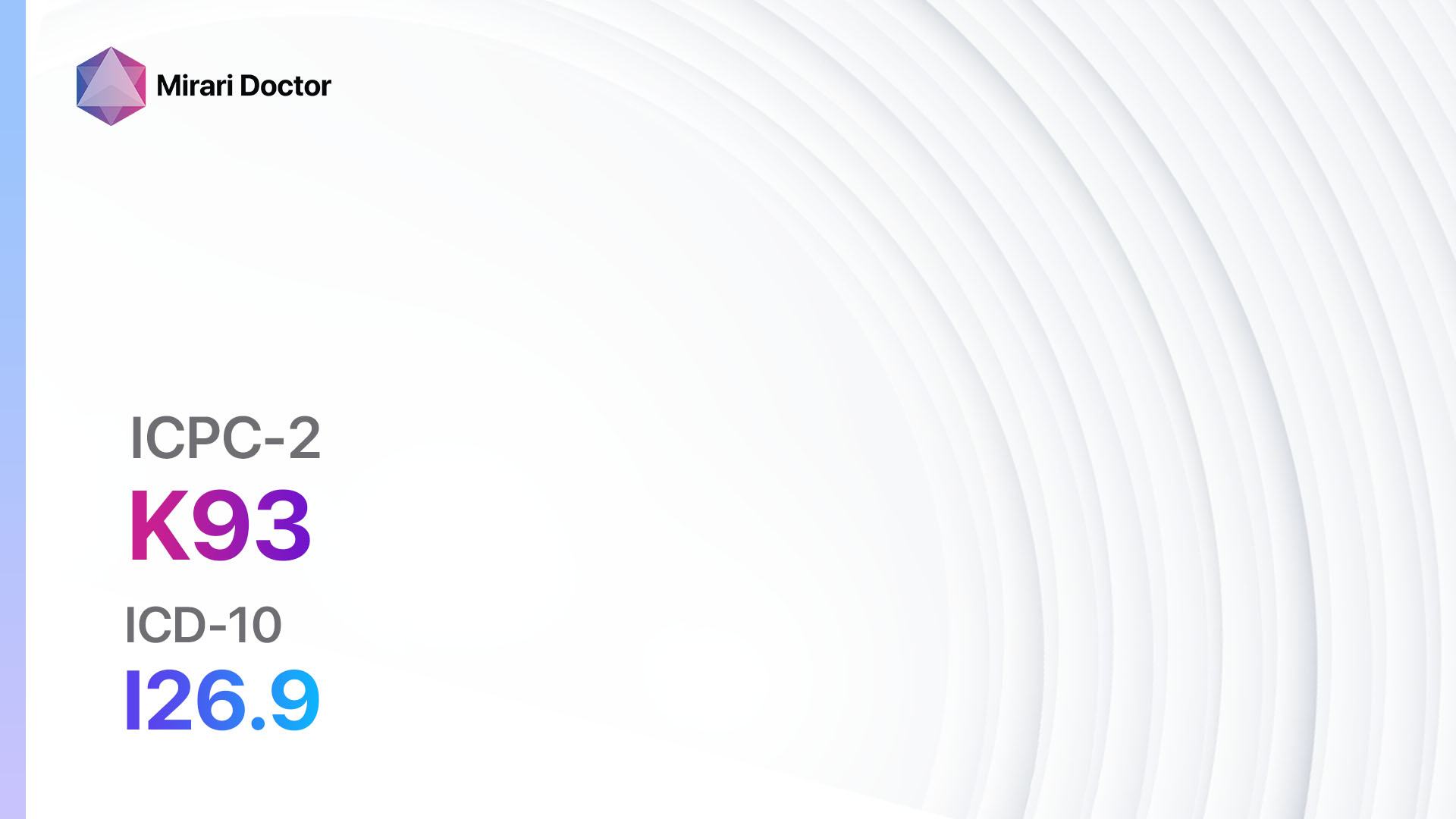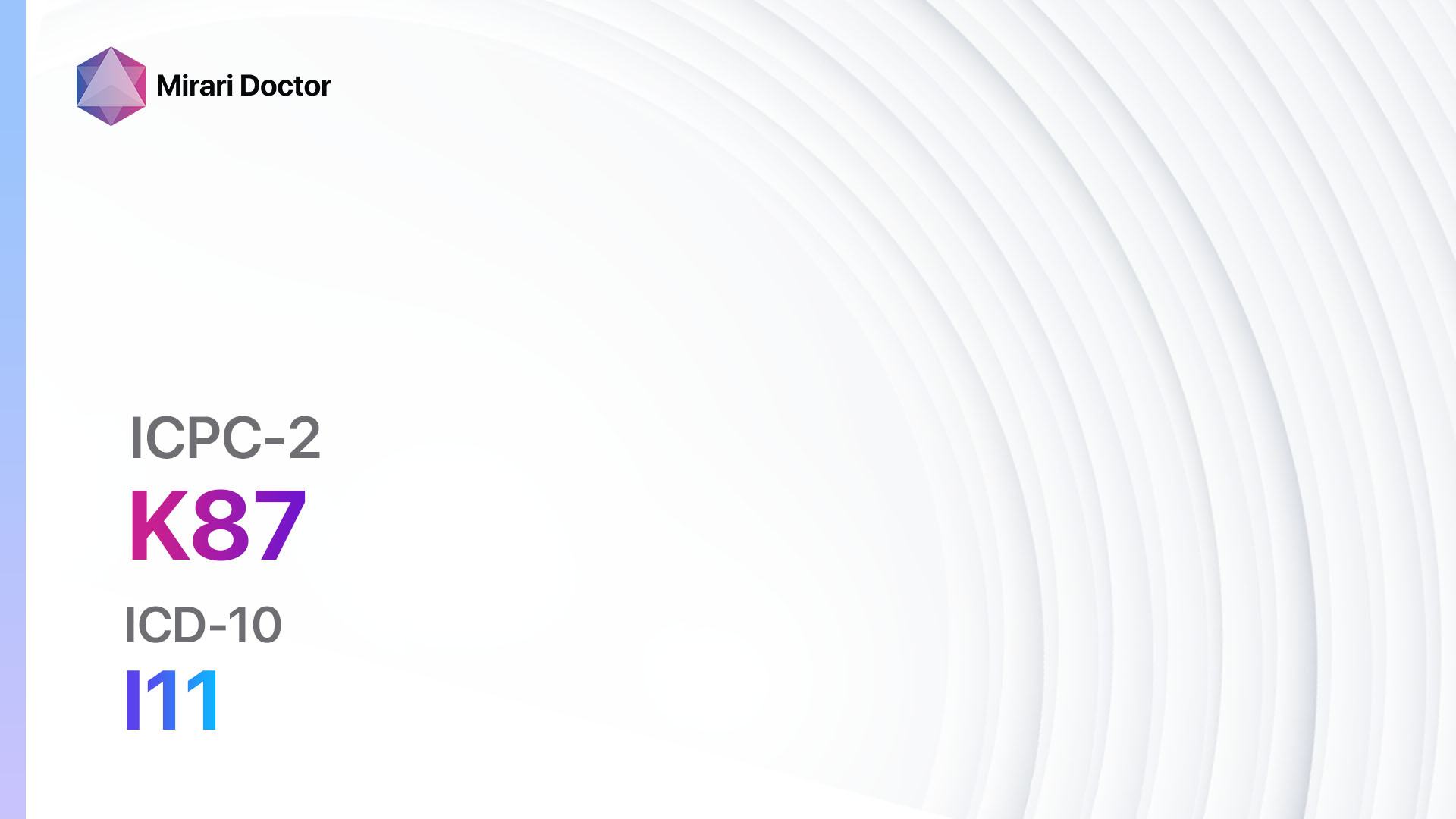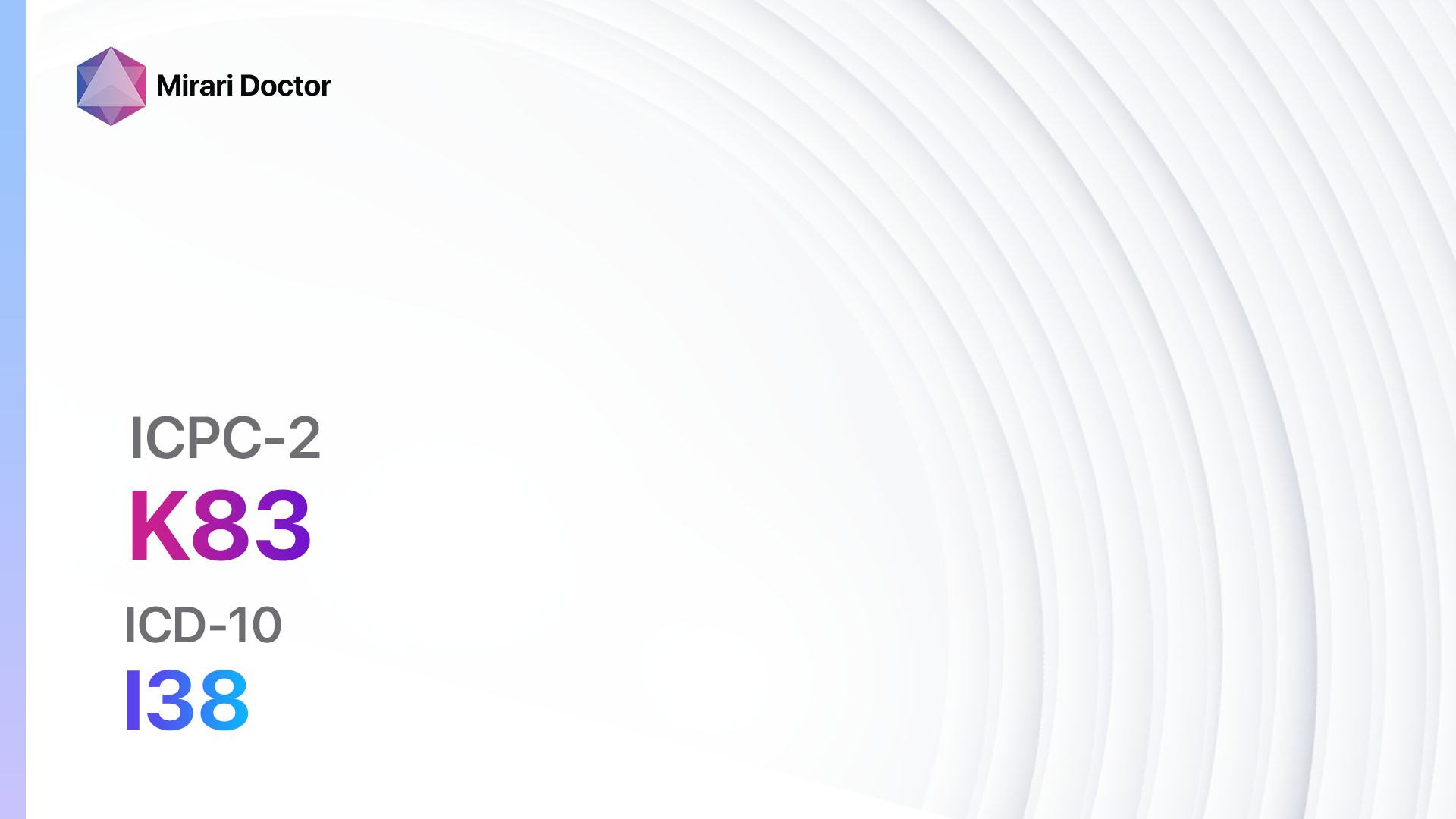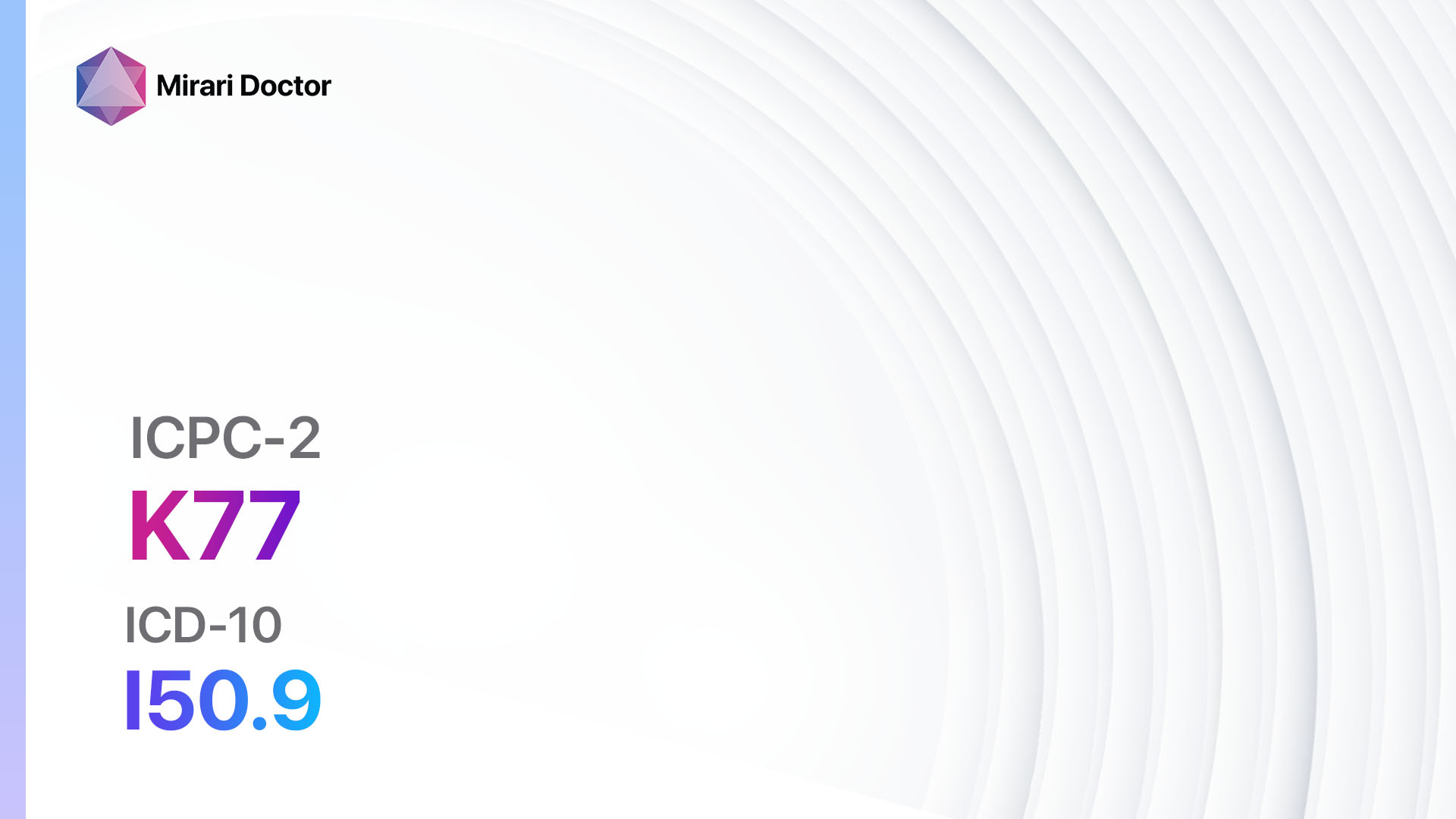
Introduction
Stroke, also known as a cerebrovascular accident (CVA), is a medical condition that occurs when the blood supply to the brain is interrupted or reduced, resulting in the death of brain cells[1]. It is a significant health concern as it can lead to long-term disability or even death[2]. The aim of this guide is to provide healthcare professionals with a comprehensive overview of the diagnosis and management of stroke.
Codes
- ICPC-2 Code: K90 Stroke/cerebrovascular accident[3]
- ICD-10 Code: I64 Stroke, not specified as haemorrhage or infarction[4]
Symptoms
- Sudden numbness or weakness in the face, arm, or leg, especially on one side of the body[5]
- Sudden confusion, trouble speaking, or difficulty understanding speech[5]
- Sudden trouble seeing in one or both eyes[5]
- Sudden severe headache with no known cause[5]
- Sudden trouble walking, dizziness, loss of balance, or coordination[5]
Causes
- Ischemic stroke: Caused by a blockage or clot in a blood vessel supplying the brain[6].
- Hemorrhagic stroke: Caused by bleeding in the brain, often due to a ruptured blood vessel[6].
Diagnostic Steps
Medical History
- Gather information about the patient’s risk factors, such as hypertension, diabetes, smoking, obesity, and family history of stroke[7].
- Ask about any previous medical conditions, such as heart disease or atrial fibrillation[7].
- Inquire about the onset and duration of symptoms[7].
Physical Examination
- Perform a thorough neurological examination, including assessment of motor strength, sensation, coordination, and reflexes[8].
- Check blood pressure, heart rate, and rhythm[8].
- Evaluate the patient’s speech and language abilities[8].
Laboratory Tests
- Complete blood count (CBC) to assess for anemia or infection[9].
- Blood glucose level to rule out hypoglycemia or hyperglycemia[9].
- Lipid profile to evaluate cholesterol levels[9].
- Coagulation studies to assess blood clotting function[9].
Diagnostic Imaging
- Non-contrast CT scan of the head to determine the type of stroke (ischemic or hemorrhagic) and to rule out other causes of symptoms[10].
- MRI of the brain to provide detailed images of the brain and blood vessels[10].
- CT angiography or MR angiography to visualize the blood vessels in the brain and neck[10].
- Transcranial Doppler ultrasound to assess blood flow in the brain[10].
Other Tests
- Electrocardiogram (ECG) to evaluate heart rhythm and detect any abnormalities.
- Echocardiogram to assess the structure and function of the heart.
- Carotid ultrasound to evaluate the blood flow in the carotid arteries.
Follow-up and Patient Education
- Schedule regular follow-up appointments to monitor the patient’s progress and adjust treatment as needed.
- Educate the patient and their family about stroke prevention strategies, such as maintaining a healthy lifestyle, managing chronic conditions, and recognizing the signs of a stroke.
Possible Interventions
Traditional Interventions
Medications:
Top 5 drugs for Stroke/Cerebrovascular Accident:
- Tissue plasminogen activator (tPA):
- Cost: Approximately $2,000-$5,000 per treatment.
- Contraindications: Recent major surgery, active bleeding, history of intracranial hemorrhage.
- Side effects: Risk of bleeding, allergic reactions.
- Severe side effects: Intracranial hemorrhage, angioedema.
- Drug interactions: Anticoagulants, antiplatelet agents.
- Warning: Should be administered within 4.5 hours of symptom onset.
- Antiplatelet agents (e.g., Aspirin, Clopidogrel):
- Cost: Aspirin is inexpensive (<$10/month). Clopidogrel is $10-$100/month for generic.
- Contraindications: Active bleeding, peptic ulcer disease.
- Side effects: Upset stomach, bleeding.
- Severe side effects: Severe bleeding, allergic reactions.
- Drug interactions: NSAIDs, other blood thinners.
- Warning: Risk of bleeding.
- Anticoagulants (e.g., Warfarin, Apixaban):
- Cost: Warfarin is inexpensive (<$10/month). Apixaban is $300-$400/month.
- Contraindications: Active bleeding, history of intracranial hemorrhage.
- Side effects: Risk of bleeding, bruising.
- Severe side effects: Severe bleeding, allergic reactions.
- Drug interactions: Other anticoagulants, antiplatelet agents.
- Warning: Regular monitoring of INR (International Normalized Ratio) required for warfarin.
- Antihypertensive medications (e.g., Lisinopril, Amlodipine):
- Cost: Generics can be $10-$50/month.
- Contraindications: Hypotension, renal artery stenosis.
- Side effects: Cough, dizziness.
- Severe side effects: Angioedema, hyperkalemia.
- Drug interactions: NSAIDs, other antihypertensive agents.
- Warning: Monitoring of renal function and potassium is required.
- Statin medications (e.g., Atorvastatin, Simvastatin):
- Cost: Generic versions can be $3-$50/month.
- Contraindications: Active liver disease, hypersensitivity.
- Side effects: Muscle pain, diarrhea.
- Severe side effects: Rhabdomyolysis, liver damage.
- Drug interactions: Grapefruit juice, other cholesterol-lowering agents.
- Warning: Regular liver function tests required.
Alternative Drugs:
- Cilostazol: Used specifically for claudication in peripheral artery disease (PAD).
- Rivaroxaban: An anticoagulant used for stroke prevention in patients with atrial fibrillation.
- Dipyridamole: Often used in combination with aspirin for stroke prevention.
- Carvedilol: A beta-blocker that may be beneficial in patients with heart failure and stroke history.
- Nimodipine: Used to prevent vasospasm after subarachnoid hemorrhage.
Surgical Procedures:
- Carotid endarterectomy: Surgical removal of plaque from the carotid artery to prevent stroke in patients with significant carotid stenosis. Cost: $15,000 to $50,000.
- Mechanical thrombectomy: Minimally invasive procedure to remove a blood clot from a blocked blood vessel in the brain. Cost: $20,000 to $50,000.
- Craniotomy: Surgical removal of a blood clot or repair of a ruptured blood vessel in the brain. Cost: $50,000 to $150,000.
Alternative Interventions
- Acupuncture: May help improve blood flow and reduce pain. Cost: $60-$120 per session.
- Chelation therapy: Controversial treatment involving the administration of chelating agents to remove heavy metals from the body. Cost: $75-$150 per session.
- Hyperbaric oxygen therapy: Involves breathing pure oxygen in a pressurized chamber to increase oxygen delivery to tissues. Cost: $200-$300 per session.
- Herbal supplements: Some herbs, such as garlic and ginkgo biloba, may have potential benefits for improving circulation. Cost: Varies depending on the specific supplement.
Lifestyle Interventions
- Dietary modifications: Encourage a diet rich in fruits, vegetables, whole grains, lean proteins, and healthy fats. Cost: Varies depending on food choices.
- Regular exercise: Recommend at least 150 minutes of moderate-intensity aerobic activity per week. Cost: Varies depending on the chosen activity.
- Smoking cessation: Provide support and resources to help the patient quit smoking. Cost: Varies depending on the chosen method (e.g., nicotine replacement therapy, medications, counseling).
- Weight management: Offer guidance on achieving and maintaining a healthy weight through portion control, calorie reduction, and regular physical activity. Cost: Varies depending on chosen weight loss methods.
- Stress management: Teach stress reduction techniques, such as deep breathing exercises, meditation, and relaxation techniques. Cost: Varies depending on the chosen method (e.g., self-help books, classes, therapy).
It is important to note that the cost ranges provided are approximate and may vary depending on the location and availability of the interventions.
Mirari Cold Plasma Alternative Intervention
Understanding Mirari Cold Plasma
- Safe and Non-Invasive Treatment: Mirari Cold Plasma is a safe and non-invasive treatment option for various skin conditions. It does not require incisions, minimizing the risk of scarring, bleeding, or tissue damage.
- Efficient Extraction of Foreign Bodies: Mirari Cold Plasma facilitates the removal of foreign bodies from the skin by degrading and dissociating organic matter, allowing easier access and extraction.
- Pain Reduction and Comfort: Mirari Cold Plasma has a local analgesic effect, providing pain relief during the treatment, making it more comfortable for the patient.
- Reduced Risk of Infection: Mirari Cold Plasma has antimicrobial properties, effectively killing bacteria and reducing the risk of infection.
- Accelerated Healing and Minimal Scarring: Mirari Cold Plasma stimulates wound healing and tissue regeneration, reducing healing time and minimizing the formation of scars.
Mirari Cold Plasma Prescription
Video instructions for using Mirari Cold Plasma Device – K90 Stroke/cerebrovascular accident (ICD-10:I64)
| Mild | Moderate | Severe |
| Mode setting: 1 (Infection) Location: 5 (Lungs) Morning: 15 minutes, Evening: 15 minutes |
Mode setting: 1 (Infection) Location: 5 (Lungs) Morning: 30 minutes, Lunch: 30 minutes, Evening: 30 minutes |
Mode setting: 1 (Infection) Location: 5 (Lungs) Morning: 30 minutes, Lunch: 30 minutes, Evening: 30 minutes |
| Mode setting: 2 (Wound Healing) Location: 5 (Lungs) Morning: 15 minutes, Evening: 15 minutes |
Mode setting: 2 (Wound Healing) Location: 5 (Lungs) Morning: 30 minutes, Lunch: 30 minutes, Evening: 30 minutes |
Mode setting: 2 (Wound Healing) Location: 5 (Lungs) Morning: 30 minutes, Lunch: 30 minutes, Evening: 30 minutes |
| Mode setting: 7 (Immunotherapy) Location: 1 (Sacrum) Morning: 15 minutes, Evening: 15 minutes |
Mode setting: 7 (Immunotherapy) Location: 1 (Sacrum) Morning: 30 minutes, Lunch: 30 minutes, Evening: 30 minutes |
Mode setting: 7 (Immunotherapy) Location: 1 (Sacrum) Morning: 30 minutes, Lunch: 30 minutes, Evening: 30 minutes |
| Mode setting: 7 (Immunotherapy) Location: 4 (Heart, Bile & Pancreas) Morning: 15 minutes, Evening: 15 minutes |
Mode setting: 7 (Immunotherapy) Location: 4 (Heart, Bile & Pancreas) Morning: 30 minutes, Lunch: 30 minutes, Evening: 30 minutes |
Mode setting:7 (Immunotherapy) Location: 4 (Heart, Bile & Pancreas) Morning: 30 minutes, Lunch: 30 minutes, Evening: 30 minutes |
| Total Morning: 60 minutes approx. $10 USD, Evening: 60 minutes approx. $10 USD |
Total Morning: 120 minutes approx. $20 USD, Lunch: 120 minutes approx. $20 USD, Evening: 120 minutes approx. $20 USD, |
Total Morning: 120 minutes approx. $20 USD, Lunch: 120 minutes approx. $20 USD, Evening: 120 minutes approx. $20 USD, |
| Usual treatment for 7-60 days approx. $140 USD – $1200 USD | Usual treatment for 6-8 weeks approx. $2,520 USD – $3,360 USD |
Usual treatment for 3-6 months approx. $5,400 USD – $10,800 USD
|
 |
|
Use the Mirari Cold Plasma device to treat Stroke/cerebrovascular accident effectively.
WARNING: MIRARI COLD PLASMA IS DESIGNED FOR THE HUMAN BODY WITHOUT ANY ARTIFICIAL OR THIRD PARTY PRODUCTS. USE OF OTHER PRODUCTS IN COMBINATION WITH MIRARI COLD PLASMA MAY CAUSE UNPREDICTABLE EFFECTS, HARM OR INJURY. PLEASE CONSULT A MEDICAL PROFESSIONAL BEFORE COMBINING ANY OTHER PRODUCTS WITH USE OF MIRARI.
Step 1: Cleanse the Skin
- Start by cleaning the affected area of the skin with a gentle cleanser or mild soap and water. Gently pat the area dry with a clean towel.
Step 2: Prepare the Mirari Cold Plasma device
- Ensure that the Mirari Cold Plasma device is fully charged or has fresh batteries as per the manufacturer’s instructions. Make sure the device is clean and in good working condition.
- Switch on the Mirari device using the power button or by following the specific instructions provided with the device.
- Some Mirari devices may have adjustable settings for intensity or treatment duration. Follow the manufacturer’s instructions to select the appropriate settings based on your needs and the recommended guidelines.
Step 3: Apply the Device
- Place the Mirari device in direct contact with the affected area of the skin. Gently glide or hold the device over the skin surface, ensuring even coverage of the area experiencing.
- Slowly move the Mirari device in a circular motion or follow a specific pattern as indicated in the user manual. This helps ensure thorough treatment coverage.
Step 4: Monitor and Assess:
- Keep track of your progress and evaluate the effectiveness of the Mirari device in managing your Stroke/cerebrovascular accident. If you have any concerns or notice any adverse reactions, consult with your health care professional.
Note
This guide is for informational purposes only and should not replace the advice of a medical professional. Always consult with your healthcare provider or a qualified medical professional for personal advice, diagnosis, or treatment. Do not solely rely on the information presented here for decisions about your health. Use of this information is at your own risk. The authors of this guide, nor any associated entities or platforms, are not responsible for any potential adverse effects or outcomes based on the content.
Mirari Cold Plasma System Disclaimer
- Purpose: The Mirari Cold Plasma System is a Class 2 medical device designed for use by trained healthcare professionals. It is registered for use in Thailand and Vietnam. It is not intended for use outside of these locations.
- Informational Use: The content and information provided with the device are for educational and informational purposes only. They are not a substitute for professional medical advice or care.
- Variable Outcomes: While the device is approved for specific uses, individual outcomes can differ. We do not assert or guarantee specific medical outcomes.
- Consultation: Prior to utilizing the device or making decisions based on its content, it is essential to consult with a Certified Mirari Tele-Therapist and your medical healthcare provider regarding specific protocols.
- Liability: By using this device, users are acknowledging and accepting all potential risks. Neither the manufacturer nor the distributor will be held accountable for any adverse reactions, injuries, or damages stemming from its use.
- Geographical Availability: This device has received approval for designated purposes by the Thai and Vietnam FDA. As of now, outside of Thailand and Vietnam, the Mirari Cold Plasma System is not available for purchase or use.
References
- Sacco, R. L., Kasner, S. E., Broderick, J. P., Caplan, L. R., Connors, J. J., Culebras, A., … & Vinters, H. V. (2013). An updated definition of stroke for the 21st century: a statement for healthcare professionals from the American Heart Association/American Stroke Association. Stroke, 44(7), 2064-2089.
- Feigin, V. L., Norrving, B., & Mensah, G. A. (2017). Global burden of stroke. Circulation research, 120(3), 439-448.
- World Health Organization. (2003). International Classification of Primary Care, Second edition (ICPC-2).
- World Health Organization. (2019). International statistical classification of diseases and related health problems (11th ed.).
- Jauch, E. C., Saver, J. L., Adams Jr, H. P., Bruno, A., Connors, J. J., Demaerschalk, B. M., … & Yonas, H. (2013). Guidelines for the early management of patients with acute ischemic stroke: a guideline for healthcare professionals from the American Heart Association/American Stroke Association. Stroke, 44(3), 870-947.
- Donkor, E. S. (2018). Stroke in the 21st century: a snapshot of the burden, epidemiology, and quality of life. Stroke research and treatment, 2018.
- Powers, W. J., Rabinstein, A. A., Ackerson, T., Adeoye, O. M., Bambakidis, N. C., Becker, K., … & Tirschwell, D. L. (2019). Guidelines for the early management of patients with acute ischemic stroke: 2019 update to the 2018 guidelines for the early management of acute ischemic stroke: a guideline for healthcare professionals from the American Heart Association/American Stroke Association. Stroke, 50(12), e344-e418.
- Goldstein, L. B., & Simel, D. L. (2005). Is this patient having a stroke?. Jama, 293(19), 2391-2402.
- Hasan, N., McColgan, P., Bentley, P., Edwards, R. J., & Sharma, P. (2012). Towards the identification of blood biomarkers for acute stroke in humans: a comprehensive systematic review. British journal of clinical pharmacology, 74(2), 230-240.
- Vilela, P., & Rowley, H. A. (2017). Brain ischemia: CT and MRI techniques in acute ischemic stroke. European journal of radiology, 96, 162-172.
Related articles
Made in USA



























